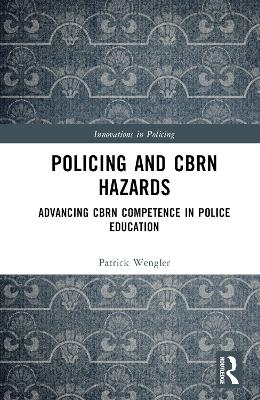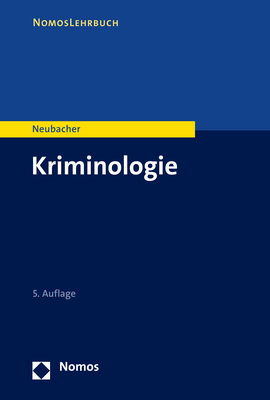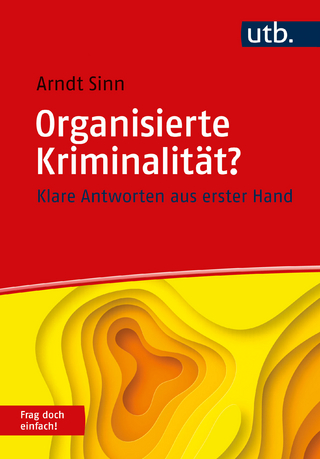
Policing and CBRN Hazards
Routledge (Verlag)
978-1-032-37213-6 (ISBN)
In this book it is argued that basic knowledge of CBRN is essential for police officers at all levels to assess and protect crime scenes, as well as to investigate cases involving CBRN materials. The author uses case studies and technical education to instruct police on how and when CBRN agents can be used maliciously, and the best methods for identifying, analysing, monitoring, and investigating related incidents. The text makes a clear case for integrating CBRN studies into police education so that first responders are enabled to assess incidents and share information with emergency management and other services to determine the most effective equipment and personnel to deploy.
This book is essential for police educators and trainers in both universities and police academies, those administering or engaged in in-service police training, and scholars studying policing, criminal justice, and terrorism.
Patrick Wengler is a Project Officer in the Assistance and Protection Branch of the Organisation for the Prohibition of Chemical Weapons (OPCW). Prior to joining the OPCW in 2020, he was a Police Inspector, Programme Assistant in Higher Education, Senior Lecturer at university and subject matter expert teaching for various international organisations. His main responsibilities include working on capacity building and non-proliferation projects, all aspects of emergency management as well as scene assessments of contaminated environments. He holds a Master of Science in Security Studies from the London Metropolitan University (UK), a Master’s in CBRN first responder and decision making from the University of Rome Tor Vergata (IT), a Bachelor of Arts degree in Applied Investigation from the University of Sunderland (UK), a Hazardous Material Technician qualification from the New Jersey State Police (US) and is a qualified CBRN operator by the CBRN School in Rieti (IT). ‘While the author is a serving member of staff at OPCW, The views expressed herein are those of the author and do not necessarily reflect those of the OPCW.’
Part 1 Historical Overview of CBRNe and HAZMAT Incidents and Impacts
Chapter 1. Etymology of Chemical, Biological and Radiological Agents and the Context on How Policing is Involved.
Etymology of abbreviations related to chemical, biological, and radiological agents
Introduction political violence and radicalization leading to terrorism with chemical, biological, and radiological agents
What can be understood under terrorism and where does it come from?
What does terrorism with chemical, biological, and radiological agents imply for policing?
Chapter 2. Terror Groups Analysed in Relation with CBRN Agents
Terror Groups analysed in relation with CBRN agents used maliciously (as a weapon)
Group 01: State terrorism
Group 02: Religious terrorism
Group 03: Marxism-oriented terrorist groups
Group 04: Single issue terrorist groups
Group 05: Lone wolves, acts of terrorism, and crime
Chapter 3. The Impact of Planes as Transportation of Goods and Living Beings
Airport, Planes, and Cargo: A risk for law enforcement officers?
Freight — Cargo and Chemical, Biological, and Radiological Agents
Accidents with dangerous goods
Infrastructure risks: Terror threat and terror acts
Chapter 4. Bad Examples
Wrong response due to lack of training and knowledge
Anthrax suspicion 2016
Another suspicious case happened in 2018
Border-crossing incidents: A reflection
Part 2 CBRNe/ HAZMAT Training Analysis Based on Current Availabilities
Chapter 5. Education on CBRNe/HAZMAT for Police Officers
Current CBRN/HAZMAT training availabilities
Police Training and Education related to CBRN/HAZMAT incident response
Possible set-up and training implementation
Chapter 6. The Necessity in Designing Police Education in HAZMAT/CBRN
Overview on current CBRN/HAZMAT courses for law enforcement
Teaching subjects that should be taken into consideration
Subjects to be covered in CBRN/HAZMAT response
Capabilities
Part 3 Insight of a Possible Police Education Programme on CBRNe/HAZMAT
Chapter 7. Subject Content for CBRN/HAZMAT Police Education
Detailed look into subject content for CBRN/HAZMAT Police education
CBRN/HAZMAT levels of training
Operations level
Technician level
Incident command
Operational
Tactical
Strategic
Chapter 8. Investigation, Report Writing, and Intelligence Analysis
Investigation
First person on scene template
First look report
Evidence collection command post (ECCP)
CBRN/HAZMAT final report
Chapter 9. Possible Implementation Strategy for Learning Curriculum in CBRN/HAZMAT
How to implement a training schedule on CBRN topics
Continued Professional Education (CPD)
Awareness Course (one full day)
Specialised training courses
| Erscheinungsdatum | 16.08.2023 |
|---|---|
| Reihe/Serie | Innovations in Policing |
| Zusatzinfo | 4 Tables, black and white; 10 Line drawings, black and white; 10 Illustrations, black and white |
| Verlagsort | London |
| Sprache | englisch |
| Maße | 152 x 229 mm |
| Gewicht | 453 g |
| Themenwelt | Recht / Steuern ► EU / Internationales Recht |
| Recht / Steuern ► Strafrecht ► Kriminologie | |
| Recht / Steuern ► Strafrecht ► Strafverfahrensrecht | |
| Sozialwissenschaften ► Politik / Verwaltung | |
| Sozialwissenschaften ► Soziologie | |
| Technik ► Umwelttechnik / Biotechnologie | |
| ISBN-10 | 1-032-37213-3 / 1032372133 |
| ISBN-13 | 978-1-032-37213-6 / 9781032372136 |
| Zustand | Neuware |
| Informationen gemäß Produktsicherheitsverordnung (GPSR) | |
| Haben Sie eine Frage zum Produkt? |
aus dem Bereich


